#punjabi actors
Explore tagged Tumblr posts
Text
From Warning to Ardaas: How Jasmine Bhasin is Taking Over Punjabi Film Franchises
Jasmine Bhasin is on fire in Punjabi cinema, and she can't be stopped! With roles in hit franchises such as Warning, Ardaas, and the eagerly awaited Carry on Jattiye, she's swiftly becoming the "lucky charm" for filmmakers. Wherever Jasmine goes, success seems to follow—she's basically the golden ticket in Punjabi cinema!

Whether she's playing a gritty character in a thriller like Warning or giving a heartbreaking performance in her debut feature Honeymoon and the soon-to-be released Ardaas, Jasmine proves she can do it all. Speaking about her experience, she stated, "I am extremely grateful for all of the opportunities that are coming my way." I'm also grateful to the Punjabi industry and public for welcoming me with open arms. I want to continue doing good work and giving my all."
Jasmine Bhasin's versatility is her true superpower, and she is the go-to actor for directors looking to add a magical touch to their productions. It's no wonder that her allure has attracted people well beyond Punjab—her fan base has swiftly grown across India, particularly among Hindi-speaking viewers who fondly recall her from television. With such a strong connection to the audience and an undeniable screen presence, Bollywood directors should not wait any longer to cast this bundle of joy in their next big production
#Ardaas Sarbat De Bhale Di#Carry On Jattiye#Features#Jasmine Bhasin#Punjabi#Punjabi Cinema#Warning#bollywood hungama#news#bollywood#social media#bollywood news#punjabi actors#punjabi movies
0 notes
Text
Why Kirandeep Rayat is the Next Big Thing Among Bollywood Punjabi Actors🎬✨
Know what has been keeping Kirandeep Rayat in the limelight and making waves within the Bollywood Punjabi movie fraternity!🎬✨ From some of the most outstanding performances to the growing fan following, get to know what sets him apart as one of the notable Bollywood Punjabi actors and why he is sure to turn out to be household news in the trade circuit. Don't miss the chance to read more about this talented actor's journey.🌟
#BollywoodPunjabiActors#KirandeepRayat#Who are some popular Punjabi actors#punjabi actors#top punjabi actors
0 notes
Text
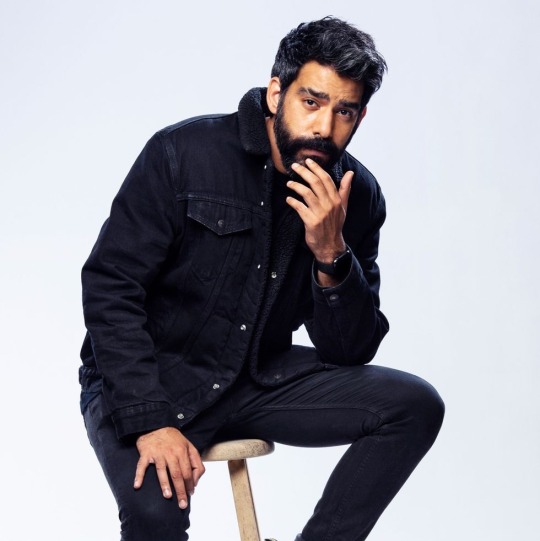


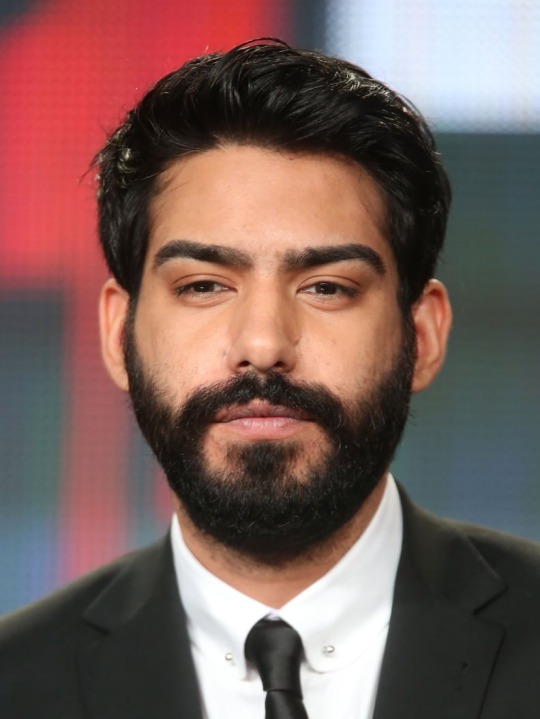

HAPPY 38TH BIRTHDAY, RAHUL KOHLI!!!
#happy birthday#happy birthday 2023#november 2023#november 13#rahul kohli#brown eyes#actor#london england#the haunting of bly manor#midnight mass#indian#punjabi#the fall of the house of usher#izombie#scorpio
110 notes
·
View notes
Text
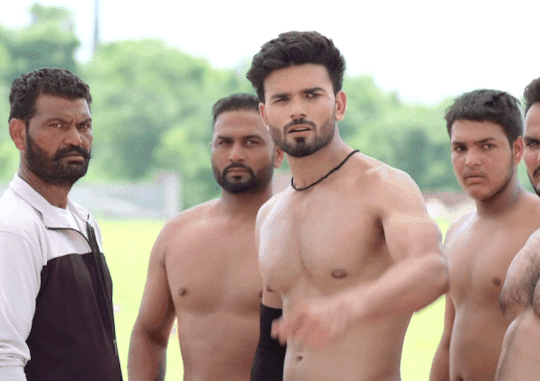

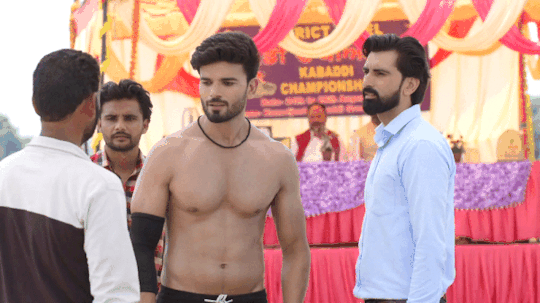





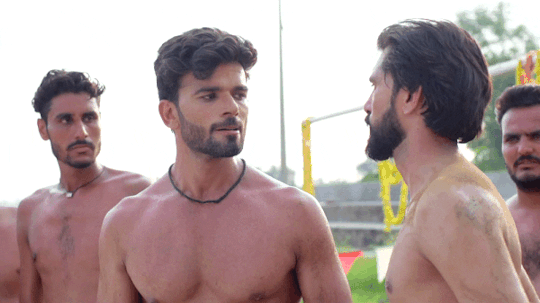

Gurjeet Singh Channi : Chhoti Jathani
#gurjeet singh channi#chhoti jathani#shirtless#indian#kabbadi#gurjeet channi#gurjeetchanni#gurjeetsinghchanni#chhotijathani#zee punjabi#zeepunjabi#shirtless indian#shirtlessindian#shirtless kabbadi#shirtless sports#shirtlesssports#shirtless punjabi#indian hunk#indian actor#punjabi hunk#punjabi actor#zeetv#zee tv#shirtless hunks#shirtless men
26 notes
·
View notes
Text

Saddam Maalik is Here
5 notes
·
View notes
Text
Punjabi Power in Bollywood: Actors Who Made It Big in Hindi Cinema
The Indian film industry, particularly Bollywood, has seen an influx of talent from various regional backgrounds, with Punjabi actors making a significant impact. This article explores the rise of Punjabi actors in Bollywood, highlighting their contributions and successes, and how they have reshaped Hindi cinema.

The Influence of Punjabi Culture on Bollywood
Punjabi culture, known for its vibrancy and energy, has found a prominent place in Bollywood films. The infusion of Punjabi elements-be it music, dance, or storytelling-has enriched the cinematic experience, making it more appealing to a broader audience.
Key Characteristics of Punjabi Actors
Punjabi actors often bring unique qualities to their roles:
Charismatic Screen Presence: Their lively personalities resonate well with audiences.
Versatility: Many actors transition seamlessly between genres, from drama to comedy.
Musical Talent: A significant number of Punjabi actors are also singers, enhancing their appeal.
Notable Punjabi Actors in Bollywood
Several Punjabi actors have successfully crossed over into Bollywood, establishing themselves as household names. Here are some of the most influential figures:
1. Diljit Dosanjh
Diljit Dosanjh is arguably one of the most successful Punjabi actors in Bollywood today. He made his debut with Udta Punjab (2016), where he portrayed a police officer battling drug issues in Punjab. His performance was widely acclaimed and marked the beginning of his successful journey in Hindi cinema. Following this, he starred in films like Phillauri and Welcome to New York, showcasing his range as an actor.
2. Akshay Kumar
Though primarily known as a Hindi film star, Akshay Kumar's roots trace back to Punjab. Born Rajiv Bhatia in Amritsar, he has consistently delivered blockbuster hits across genres. His contributions to both comedy and action films have solidified his status as one of Bollywood's leading actors.
3. Neeru Bajwa
Neeru Bajwa began her career in Bollywood with Main Solah Baras Ki (1998) before making a name for herself in Punjabi cinema. Her return to Bollywood with films like Prince and Phoonk 2 showcased her versatility and ability to connect with diverse audiences.
4. Ammy Virk
Ammy Virk is another prominent name among Punjabi actors in Bollywood. Known for his musical talent and acting skills, he gained recognition through films like Qissa Punjab and later made his mark in Hindi cinema with Laal Singh Chaddha. His journey exemplifies the blend of regional talent transitioning into mainstream Hindi films.
5. Binnu Dhillon
Binnu Dhillon is celebrated for his comedic roles in Punjabi cinema but has also ventured into Bollywood with films like Yamla Pagla Deewana Phir Se. His unique humor and relatable characters have made him a favorite among audiences.
The Role of a Film Directory
A film directory serves as an essential tool for both filmmakers and audiences alike. It provides comprehensive information about actors, films, and industry trends. For those interested in exploring the contributions of Punjabi actors in Bollywood, utilizing a film directory can enhance understanding and appreciation of their work.
Benefits of Using a Film App
Film apps have revolutionized how audiences engage with cinema:
Comprehensive Databases: They offer extensive databases of films and actors.
User-Friendly Interfaces: Easy navigation allows users to find specific information quickly.
Regular Updates: Keeping track of new releases and actor profiles ensures fans stay informed.
The Future of Punjabi Actors in Bollywood
The future looks promising for Punjabi actors in Bollywood. As the industry continues to evolve, the demand for diverse talent is growing. Several factors contribute to this trend:
Increased Collaboration: More filmmakers are recognizing the value of regional talent.
Cultural Representation: Audiences are drawn to stories that reflect their backgrounds.
Global Reach: With the rise of digital platforms, Punjabi content is reaching international audiences.
Conclusion
Punjabi actors have undeniably made a significant impact on Bollywood, bringing their unique flair and cultural richness to Hindi cinema. As they continue to break barriers and redefine roles within the industry, it is clear that their influence will only grow stronger. For fans eager to explore this vibrant segment of cinema further, utilizing a film directory or a film app can provide valuable insights into the lives and careers of these talented individuals.
In summary, the journey of Punjabi actors in Bollywood is not just about individual success; it reflects a broader narrative about cultural exchange and representation within Indian cinema. As they continue to shine on the silver screen, these stars remind us that talent knows no boundaries, whether linguistic or regional, and that true artistry resonates universally.
0 notes
Text
'Big Bollywood Actor's Wife Caught Him Naked, Cheating On Her With 'Actress In Vanity Van' 2 Months After Wedding, Says Wedding Filmer Vishal Punjabi | People News
New Delhi: In an explosive revelition made by a famous wedding filmer Vishal Punjabi, once again eyebrows are raised on how infidelity is quite a norm in the dark underbelly of showbiz. In his recent chat, he was asked if any of the marriages he has filmed have ended in divorce. Speaking to DJ Simz on YouTube, Vishal Punjabi said, “That happened with a celebrity. Two months after their wedding,…
0 notes
Text
Who Is Highest Paid Actor In India: You will be shocked to hear who is the most expensive actor of Asia, neither Shahrukh nor Salman Khan.
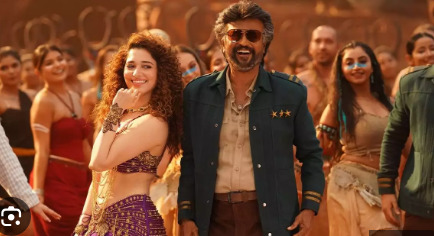
The name of Asia's highest paid actor has been revealed, which neither Shahrukh Khan, nor Salman Khan, nor Allu Arjun nor Amitabh Bachchan is included.
#bollywoodactor#tollywood#tollywoodbeauty#tollywoodactress#tollywoodqueen#bollywoodmovies#bhojiwood#bhojipuriyaloveer#bhojipuri#Pinjabi#punjabi#South#southmovie2023#celebrities#celebrity#actor
0 notes
Text
#Amrinder Gill#singer#actor#film producer#film director#Indian film actor#Actors in Punjabi cinema#Punjabi singers#punjabi film producers#punjabi film directors#Punjabi cinema
1 note
·
View note
Video
youtube
ਐਕਟਰ Rana Ranbir ਦੀ ਧੀ ਦਾ ਹੋਇਆ ਵਿਆਹ👰ਵੇਖੋ Wedding ਦੀ ਪੂਰੀ ਵੀਡੀਓ | Seerat ...
0 notes
Text

Who are the most famous Bollywood Punjabi actors?
Kirandeep is making waves in Bollywood, known for his lively acts and charming on-screen charisma. Coming from Punjab, his climb into the core of Indian cinema is marked by a row of strong characters that have drawn him closer to fans all over the country.
#Who are the most popular Punjabi actors#top punjabi actors#punjabi actors#punjabi actors male#Bollywood punjabi actors
0 notes
Text
https://pollywoodbuzz.com
For upcoming and latest Punjabi Entertainment Industry News or Updates visit our website pollywoodbuzz.com.
#pollywood#buzz#entertainment#punjabi#industry#news#latest#updates#movie#singers#ammyvirk#diljitdosanjh#sonambajwa#sargunmehta#punjabisingers#actors#new punjabi song
1 note
·
View note
Text
Historical notes on Armand’s cultural background in the show
In the interest of not playing fast and loose with South Asian history and geopolitics, I have, to the best of my ability, compiled this guide on Armand as a character in the historical context of the regions and periods he is associated with. I am not an expert on these things, so anyone more educated than me is welcome to suggest edits. Probably the most complex topic here is language, and so that is the section in which I most likely made errors.
While I do have some formal academic training in this area, I must emphasize again that I am not an expert, nor am I native to any of the countries listed here, so I am functioning mostly on outsider knowledge. In the interest of making this accessible, most of this information can also be found on Wikipedia with a quick google search. This is not definitive or exhaustive, but it is meant to encourage people to be conscientious about not slipping into Orientalist thought or discourse when discussing the character (or ever, obviously). Also please remember not to conflate the character and the actor. This may also serve as a tool for fic writers.
Content warning: discussion of slavery/slave trade
(Main content below the cut)
Period and Region
India
Armand tells Daniel in s1e7 that he is 514 in 2022, meaning he was either born or made around the year 1508. He tells both Louis and Daniel that he is from Delhi, or was at least in Delhi when he was abducted. Delhi is a city in Northwestern India that sits on the border between the states of Uttar Pradesh and Haryana. (There is an Old Delhi and a New Delhi. These two cities abut and overlap one another. Armand refers to Old Delhi.) Therefore, Armand would have been living in Delhi during the latter years of the Delhi Sultanate, which was an empire of Islamic dynasties that ruled Northwestern India from the late 12th century until the Mughal conquest in 1526. (The Delhi Sultanate also pushed expansion into the south and the east during various periods throughout its reign. Its main opponents were other Muslim kingdoms along with Hindu kingdoms, especially in the south.)
Italy
Armand would have been living in the Republic of Venice during the height of the Venetian Renaissance. Like the Delhi Sultanate, the Republic of Venice was also in its later years during this time, but, although the Republic did face economic and political unrest during this period, they remained the richest city-state in Italy. Marius was a Venetian painter, a contemporary of Tintoretto, according to Armand in season 1. Tintoretto lived from 1518 to 1594. Whether the painting Daniel is examining in the episode was painted before or after Armand’s arrival in Venice is unclear, but we can assume that he was living in Venice as Amadeo in the early decades of the 16th century. The Republic entered its full fledged decline in the 18th century, by which time Armand would have been in Paris.
Language
In India
Armand most likely spoke an early version of Hindustani (likely Hindavi) while living in Delhi, although, according to the books, Armand has mostly forgotten his native language by the time Marius buys him. Hindustani first developed under the Delhi Sultanate, and is still spoken today. Its two main branches today are Hindi and Urdu. (Many other languages are also spoken in India today, including English, Punjabi, Tamil, Bengali, and many more. Sadly, not all of these languages enjoy legal status.)
Armand may have also spoken a dialect of Western Hindi, which was commonly spoken in Haryana and Uttar Pradesh, and is an ancestor of Hindustani.
Hindavi and Persian were the official languages of the sultanate.
Hindavi is the most likely due to his region, period, and his Sanskrit name, Arun. Sanskrit is an Old Indo-Aryan language from which many later Indo-Aryan languages are derived. (Sanskrit names are still common in South Asia.)
In Italy and France
However, as mentioned previously, Armand forgets his native language early in life. Therefore, it is unclear whether he counts it among the languages he speaks when he tells Daniel that French was his fifth language.
While in Venice in the books, Armand is trained in classical Latin and Greek, and often communicates in Greek, which was also the canonical language of Eastern Orthodox which he practiced in the books before his abduction. Italian and Venetian were also spoken in Venice at the time, so it is likely that Armand picked up both of those while living there. Even if he only picked up Venetian, he would have learned Italian while living with the Children of Darkness in Rome. Venetian, Italian, and Latin were the official languages of the Republic of Venice.
He tells Daniel that he learned both French and English while living in Paris (making English his sixth language).
Religion
In Dehli
The Sanskrit name Arun also suggests that Armand was from a Hindu family living in Delhi. While having a Sanskrit name does not necessarily preclude his being Muslim, it is just more likely that he was Hindu. The majority religion in Delhi during the sultanate was Hinduism, while Islam was practiced mainly by the elite, although conversion was common. The state religion of the sultanate was Sunni Islam. Christianity, Buddhism, Jainism, and Zoroastrianism were also practiced in the sultanate.
Sanskrit is the canonical language of both Hinduism and Buddhism, but Buddhism was facing persecution during this period, and therefore becoming increasingly rarer in the north.
We can assume that Armand was devoted most likely to Hinduism, or possibly one of the others listed, as Armand is deeply religious in the books.
In Dubai, Venice, and Paris
We do see Armand praying according to Islamic practice in season 1. Even more confusingly, Daniel points out that the phrase “asr namozi” is not Arabic, but perhaps Kazakh. “Asr namozi” is actually an Uzbek phrase referring to the asr prayer, or “afternoon prayer,” in Islam. Why Armand would be speaking Uzbek is lost on me, as nothing else in his history necessarily suggests ties to the region. It could be part of his Rashid disguise to somehow misdirect Daniel. Whatever the case, as a highly intelligent five hundred year old vampire, I’m sure Armand could learn any language he wanted.
While Armand may not have practiced Islam during his life in Delhi, it is entirely possible he later converted. If Armand was Hindu, it would also make sense that he lapsed out of practice in Venice, as, in the books, Armand loses almost all ties to his native culture while in Venice (his name, his language, his religion, etc.) at least partially due to Marius’s influence. Marius’s beliefs are closely aligned with western humanism, and so he discourages Armand from complete devotion to religion. The state religion of the Republic was Roman Catholicism, but Eastern Orthodox, Protestantism, and Judaism were also practiced. There was also a small Muslim population, mainly Ottoman merchants.
The “Children of Darkness,” the vampire cult which kidnaps Armand in Venice and which he later leads in Paris, follows Catholic teachings. In the book and in the show, the cult’s obsession with Satan is explicitly Catholic. Satan is also an adversarial figure in Islam (called “Iblis” or “Shaitan”), so if Armand was a practitioner of Islam before, he likely would have been able to syncretize those beliefs and practices with those of the Children or Darkness. However, by the time Lestat finds Armand, he has lost faith (if he ever had it) in the teachings of the Children of Darkness. The last is true of both the show and the novels.
In the novels, Armand alternates between periods of religious fanaticism and zealotry and total atheism, so it would make sense that, along these oscillations, he would also move between different religions, trying to find the right one. In the books, after Armand meets Lestat, he enters a period of atheism that lasts well into the twentieth century. If the show is following this sequence, then it is likely that Armand’s praying in front of Daniel is just part of his disguise. However, the show clearly is not following the novels’ timeline to a T, so it is also entirely possible Armand is genuinely praying in this scene.
Slave Trade
(Disclaimer: Slavery is, unfortunately, ubiquitous across cultures and time periods. While slavery is deplorable in any context, the intent of this post is not to make moral judgements about any one culture. It is simply to discuss the possible historical context of a fictional character. We ought to condemn slavery wherever we see it, but we ought not to view it as pathological to one culture or another. Slavery is still practiced in various forms today (wage slavery, convict leasing, illegal human trafficking, etc.) Slavery serves a capitalist market, but it can create revenue in other systems as well.)
Slave trade was a major economic practice under the Delhi Sultanate, with the enslaved most commonly being of Turkic or Hindu origin.
(From the Wikipedia page on “Slavery in India.”)

Enslavement of Muslims was far less common under the Delhi Sultanate (although many enslaved people converted to Islam), and so this, again, suggests Armand was most likely a Hindu.
Slave trade was highly regulated under the sultanate, and private slave trade was essentially banned. The exporting of enslaved people on the international market was an important source of revenue for the sultanate, especially during military campaigns. (Slavery continued in the Mughal period, but in somewhat different contexts.)
Therefore, Armand was likely a young Hindu who was abducted in Delhi with sanction from the state and sent overseas to be sold on the international market, landing him in Venice.
However, it is also possible that Armand was abducted by Venetians, as the Republic often sent merchant ships to foreign countries, including India, during this period. The Republic also had many trade outposts and territories in various central and west Asian cities. I am unsure whether this type of trade would have been considered legal or permissible under the sultanate.
In the books, Armand is abducted by the Ottomans and taken to Constantinople/Istanbul to be sold. This is a less likely possibility for the show, given the shift in region.
//
If you’ve stayed with me this long, thanks for reading. All bolded terms have corresponding Wikipedia articles. This post may be edited according to new information or outside corrections.
#the vampire chronicles#interview with the vampire#armand#interview with the vampire amc#interview with the vampire spoilers#book spoilers#the vampire armand#iwtv amc#amc iwtv#iwtv spoilers#iwtv#tvc#iwtv text post#iwtv discourse#iwtv theory#iwtv fic
176 notes
·
View notes
Text
Abhijeet - Ole Ole 1994
Abhijeet Bhattacharya is an Indian playback singer who primarily sings in Hindi Film Industry. Apart from Hindi, he has also sung in other languages including Bengali, Marathi, Nepali, Tamil, Bhojpuri, Punjabi, Odia and his native language Bengali both in West Bengal and Bangladesh. Abhijeet has sung 6034 songs in more than 1000 films. He was nominated for Forbes Popular 100 Indian Celebrity in the year 2014.
Yeh Dillagi (This Cheerfulness) is a 1994 Indian Hindi-language romantic comedy-drama film directed by Naresh Malhotra and produced by Yash Chopra. Based on the 1954 American film Sabrina, its story revolves on two brothers (Akshay Kumar and Saif Ali Khan) who fall in love with their family driver's daughter, Sapna (Kajol), a successful model. The film released on 6 May 1994, and emerged as a commercial success, grossing ₹10.8 crore against its ₹1.6 crore budget.
At the 40th Filmfare Awards, Yeh Dillagi received 4 nominations – Best Actor (Kumar), Best Actress (Kajol), Best Music Director (Dilip Sen, Sameer Sen) and Best Male Playback Singer (Abhijeet for the song "Ole Ole"). The film's soundtrack album contains seven songs composed by Dilip Sen-Sameer Sen. It became one of the top three best-selling Bollywood soundtrack albums of 1994, with 4.5 million sales. The song "Ole Ole", sung by Abhijeet was a hit at the music charts. "Ole Ole" was remixed for the 2020 film Jawaani Jaaneman.
"Ole Ole" received a total of 68,2% yes votes!
youtube
#finished#high yes#low no#low reblog#90s#soundtracks#film score#abhijeet#hindi#o2#o2 sweep#lo13#lo1#lo3
401 notes
·
View notes
Text

Punjabi movie actors are making waves in Bollywood, bringing unique cultural richness and powerful performances. Their talent and charm are redefining mainstream entertainment and creating a vibrant fusion of regional and national cinema. Discover how they're shaping Bollywood's dynamic landscape.
0 notes
Text


"Eärnur had held the crown only seven years when the Lord of Morgul repeated his challenge, taunting the king that to the faint heart of his youth he had now added the weakness of age. Then Mardil could no longer restrain him, and he rode with a small escort of knights to the gate of Minas Morgul. None of that riding were ever heard of again. . . [A]nd the crown of Elendil lay in the lap of King Eärnil in the Houses of the Dead, where Eärnur had left it." - J.R.R. Tolkien, The Return of the King, "Appendix A: Annals of the Kings and Rulers"
@aspecardaweek day 2 ⇢ aromanticism || EÄRNUR OF GONDOR
[ID: a picspam comprised of 12 images in shades of green, grey, black, and white (the colors of the aromantic flag).
1: A lush jungle with ferns growing / 2: Two black horses resting their heads on the back of a white horse / 3: Greenish white serif text with a darker green shadow reads "eärnur" in italicized capital letters on a black background / 4: Amar Chadha-Patel, a british-indian/punjabi actor with light brown skin, dark, shoulder-length hair, and a full beard. He is shown in profile, looking serious and wearing leather armor. / 5: The green facade of an indian building / 6: Lightning and clouds over low mountains / 7: A long hall lined with statues, with a black and white tiled floor / 8: Green grapes / 9: Amar Chadha-Patel, this time shown from the front wearing a breastplate under an open surcoat, with his hair tied back / 10: Same format as Image 3, but the text is lowercase, and reads "He was a man of strong body and hot mood; but he would take no wife, for his only pleasure was in fighting, or in the exercise of arms." / 11: Silver armor with bronze-colored trim / 12: A bed with brocade coverings set into a wallpapered alcove //End ID]
#aspecardaweek#asaw24#eärnur#gondor#lord of the rings#mepoc#lotr#lotredit#tolkienedit#oneringnet#tolkiensource#sourcetolkien#litedit#fantasyedit#brought to you by me#edits with the wild hunt#described#picspam#fc: amar chadha-patel
66 notes
·
View notes